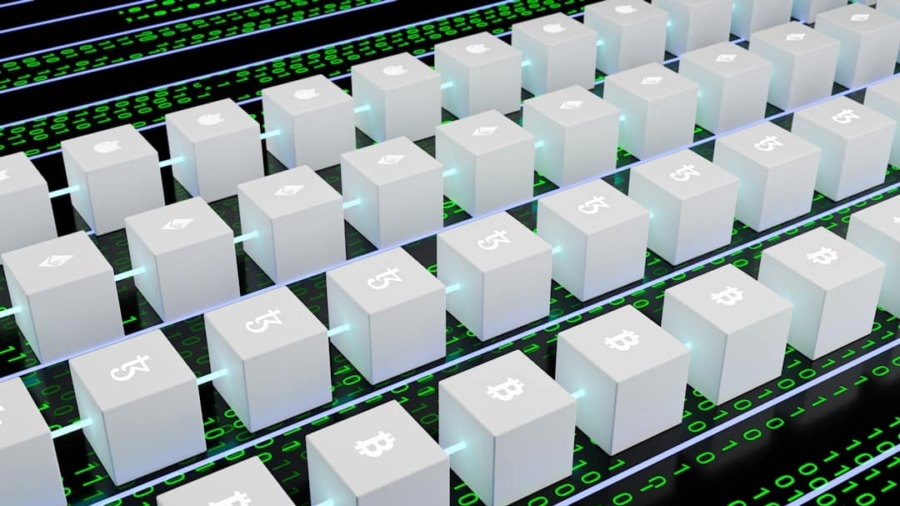Blockchain technology has emerged as a revolutionary force across various sectors, fundamentally altering how data is stored, shared, and secured. At its core, blockchain is a decentralized digital ledger that records transactions across multiple computers in such a way that the registered transactions cannot be altered retroactively. This technology was initially developed as the backbone for cryptocurrencies like Bitcoin, but its potential applications extend far beyond financial transactions.
The decentralized nature of blockchain ensures that no single entity has control over the entire chain, which enhances transparency and security. Each block in the chain contains a list of transactions, a timestamp, and a cryptographic hash of the previous block, creating an immutable record that is resistant to tampering. The implications of blockchain technology are profound, particularly in sectors that require secure and verifiable records.
One such area is education, where the integrity of academic records is paramount. As educational institutions increasingly move towards digital solutions for record-keeping, the need for secure and reliable systems becomes more pressing. Blockchain offers a promising solution by providing a transparent and tamper-proof method for storing academic credentials.
This not only protects the integrity of the records but also simplifies the verification process for employers and other educational institutions.
Key Takeaways
- Blockchain technology is a decentralized and secure way of storing and sharing information, making it ideal for academic records.
- Secure academic records are crucial for maintaining the integrity and credibility of educational institutions and the qualifications of students and graduates.
- Blockchain ensures security by using cryptographic techniques to create an immutable and transparent ledger of academic records.
- The advantages of using blockchain for academic records include increased security, reduced fraud, and streamlined verification processes.
- Examples of blockchain implementation in academic institutions include the use of digital credentials and certificates, as well as secure student data management systems.
The Importance of Secure Academic Records
The significance of secure academic records cannot be overstated in today’s competitive job market. Academic credentials serve as a critical measure of an individual’s qualifications and capabilities. Employers rely on these records to assess potential candidates, making it essential that they are accurate and trustworthy.
Unfortunately, the traditional methods of record-keeping are fraught with vulnerabilities. Instances of diploma mills and fraudulent claims have raised concerns about the authenticity of academic qualifications. As a result, there is an urgent need for systems that can ensure the security and validity of academic records.
Moreover, the rise of online education has further complicated the landscape of academic record-keeping. With more students enrolling in online courses and programs, institutions must find ways to verify the authenticity of these credentials efficiently. Traditional methods often involve cumbersome processes that can lead to delays and inaccuracies.
By leveraging blockchain technology, educational institutions can create a secure and streamlined system for issuing and verifying academic records.
How Blockchain Works to Ensure Security
Blockchain operates on a decentralized network of computers, known as nodes, which work together to validate and record transactions. When a new transaction occurs—such as the issuance of an academic credential—it is grouped with other transactions into a block. This block is then cryptographically linked to the previous block in the chain, creating a chronological sequence of records.
Each block contains a unique hash that serves as its digital fingerprint, ensuring that any alteration to the block would change its hash and alert the network to potential tampering. The consensus mechanism employed by blockchain networks further enhances security. Most public blockchains use mechanisms like Proof of Work or Proof of Stake to ensure that all nodes agree on the validity of transactions before they are added to the chain.
This decentralized consensus eliminates the need for a central authority, reducing the risk of fraud or manipulation. In the context of academic records, this means that once a credential is recorded on the blockchain, it becomes nearly impossible to alter or forge without detection. The transparency inherent in blockchain technology allows all stakeholders—students, employers, and educational institutions—to verify the authenticity of records independently.
Advantages of Using Blockchain for Academic Records
The adoption of blockchain technology for academic records offers numerous advantages that address many of the shortcomings of traditional record-keeping systems. One significant benefit is enhanced security. The immutable nature of blockchain ensures that once a record is created, it cannot be altered or deleted without consensus from the network.
This drastically reduces the risk of fraud and ensures that academic credentials remain trustworthy over time. Another advantage is increased efficiency in record verification processes. Traditional methods often involve lengthy procedures for verifying academic credentials, which can be cumbersome for both institutions and employers.
With blockchain, verification can occur almost instantaneously. Employers can access a candidate’s verified credentials directly from the blockchain without needing to contact educational institutions for confirmation. This not only speeds up hiring processes but also reduces administrative burdens on educational institutions.
Instead of relying on institutions to provide transcripts or diplomas, students can maintain their credentials on a personal digital wallet linked to the blockchain. This level of control allows students to share their qualifications with potential employers or other educational institutions at their discretion, enhancing their ability to manage their professional identity.
Examples of Blockchain Implementation in Academic Institutions
Several educational institutions around the world have begun exploring and implementing blockchain technology to secure academic records. One notable example is MIT Media Lab, which has developed a system called Blockcerts that allows students to receive digital diplomas on the blockchain. These diplomas are cryptographically signed and can be easily verified by employers or other institutions through a simple online process.
This initiative not only enhances security but also provides students with a modern way to showcase their achievements. Another example is the University of Nicosia in Cyprus, which became one of the first universities to offer degrees on the blockchain. The university issues diplomas that are recorded on a public blockchain, allowing graduates to prove their qualifications without relying on traditional verification methods.
This initiative has garnered attention from other institutions looking to adopt similar practices. In addition to individual institutions, collaborative efforts are also underway to create broader frameworks for blockchain in education. The Open University in the UK has partnered with various organizations to explore how blockchain can be used for lifelong learning records, enabling individuals to accumulate and verify their educational achievements throughout their lives.
Challenges and Limitations of Using Blockchain for Academic Records
Despite its many advantages, implementing blockchain technology for academic records is not without challenges and limitations. One significant hurdle is the need for widespread adoption among educational institutions and employers. For blockchain systems to be effective, all parties involved must agree on standards and protocols for recording and verifying credentials.
This requires collaboration across various stakeholders, which can be difficult to achieve given the diverse landscape of educational systems worldwide. Another challenge lies in regulatory compliance and data privacy concerns. Educational institutions must navigate complex legal frameworks regarding data protection when implementing blockchain solutions.
For instance, regulations such as GDPR in Europe impose strict guidelines on how personal data can be stored and shared. Ensuring compliance while leveraging the transparency features of blockchain can create tension between privacy requirements and the need for open access to information. Additionally, there are technical challenges associated with integrating blockchain into existing systems.
Many educational institutions rely on legacy systems that may not be compatible with blockchain technology. Transitioning to a new system requires significant investment in infrastructure and training for staff members who may not be familiar with blockchain concepts.
Future Implications of Blockchain in Education
The future implications of blockchain technology in education are vast and multifaceted. As more institutions recognize the benefits of secure academic records, we may see an increasing trend toward standardization in how credentials are issued and verified across different regions and countries. This could lead to greater global mobility for students and professionals alike, as universally accepted digital credentials become commonplace.
Moreover, blockchain could facilitate lifelong learning by allowing individuals to accumulate verifiable records of their educational achievements over time. As job markets evolve and new skills become necessary, individuals will need to demonstrate their competencies effectively. A blockchain-based system could provide a comprehensive portfolio of skills and qualifications that can be easily shared with potential employers or educational institutions.
Furthermore, as technology continues to advance, we may witness innovations such as smart contracts being integrated into educational processes. Smart contracts could automate various aspects of credentialing, such as automatically issuing diplomas upon course completion or triggering payments based on performance metrics. This could streamline administrative processes within educational institutions while enhancing accountability.
The Impact of Blockchain on Academic Record Security
The impact of blockchain technology on academic record security is profound and transformative. By providing a decentralized, immutable ledger for storing credentials, blockchain addresses many vulnerabilities associated with traditional record-keeping methods. The ability to verify academic achievements quickly and securely enhances trust among employers while empowering students with greater control over their qualifications.
As educational institutions continue to explore innovative solutions for record-keeping, blockchain stands out as a promising avenue for ensuring the integrity and authenticity of academic credentials. While challenges remain in terms of adoption and regulatory compliance, the potential benefits far outweigh these obstacles. The future landscape of education may very well be shaped by this technology, leading to more secure, efficient, and transparent systems for managing academic records worldwide.
In the realm of digital security and academic integrity, blockchain technology is revolutionizing how educational institutions manage and secure academic records. A related article that delves into the broader implications of technology in education is How to Choose a PC for Students. This article provides insights into selecting the right technology tools for students, which complements the discussion on how blockchain can enhance the security and reliability of academic records. By understanding both the hardware and software aspects, educational institutions can create a more secure and efficient learning environment.
FAQs
What is blockchain technology?
Blockchain technology is a decentralized, distributed ledger that records transactions across many computers in such a way that the registered transactions cannot be altered retroactively.
How does blockchain ensure secure academic records?
Blockchain ensures secure academic records by providing a tamper-proof and transparent system for recording and verifying academic credentials. Once a record is added to the blockchain, it cannot be altered or deleted, ensuring the integrity of the academic records.
What are the benefits of using blockchain for academic records?
Using blockchain for academic records provides benefits such as increased security, transparency, and efficiency. It also reduces the risk of fraud and misrepresentation of academic credentials.
How does blockchain technology verify academic credentials?
Blockchain technology verifies academic credentials by allowing educational institutions to securely record and store academic records on the blockchain. These records can then be easily accessed and verified by employers, academic institutions, or other relevant parties.
Is blockchain technology widely used for securing academic records?
While the use of blockchain for securing academic records is still in its early stages, there is a growing interest in its potential to revolutionize the way academic credentials are stored and verified. Several pilot projects and initiatives are exploring the use of blockchain for this purpose.



